
“Up until recently, the scientific community couldn’t agree if glass was a liquid or a solid, which is rather insane,” Cybele Maylone said. “It speaks to the magical properties that make glass so enchanting to artists.
Maylone is the executive director at UrbanGlass, which, since it was founded in 1977, has grown from the back room of a ceramics studio in SoHo into the largest glass producer in the United States.
This success highlights the growing popularity of glass among craftspeople and contemporary artists alike. Glass may be an unforgiving medium, but it’s extremely versatile. It can be blown, cast, cut, flameworked, filled with gas, and illuminated. Artists’ approaches have become increasingly multifaceted – combining glass with videos, exploring 3D printing, or using it as an element in social practice or performance.
What follows below is the work of seven artists, each exploring the myriad possibilities of glass – from casts of miniature cities to a functioning glass seismograph to durational performance.
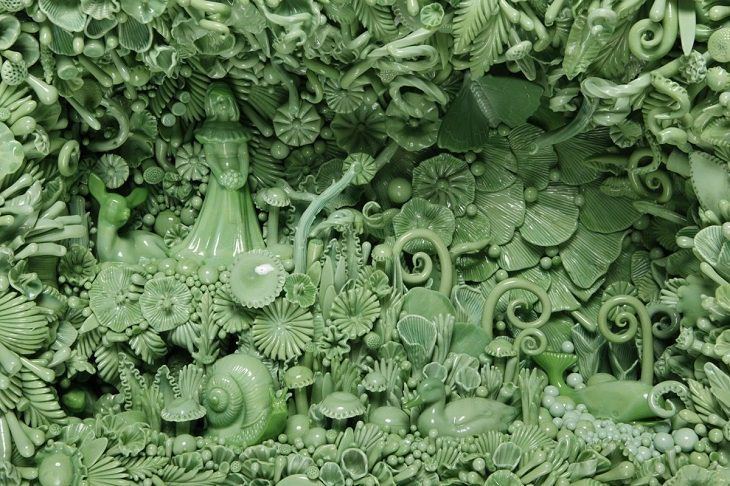
Using vintage scrap and deadstock from glass factories, Cowan creates sculptures that sprout like coral from a table or wall. Her art is either completely uniform in color or has a gentle gradient. Recycling the material allows Cowan to engage with both the history of the pressed-glass industry and personal histories of her audience.
Cowan explains that “many people recognize the colors or pieces in my work because their parents or grandparents collected pressed glass. People from around the country send me old or broken glassware, which I use in my sculptures to tell the stories of objects often abandoned in the dustbin of American design.”
Community and collaboration also help to drive her practice. Like the majority of glass artists, she doesn’t labor in isolation. She says that “because glass usually requires multiple people to be involved in the production of pieces, the community is really close and constantly inspiring. It’s a big dysfunctional family.”
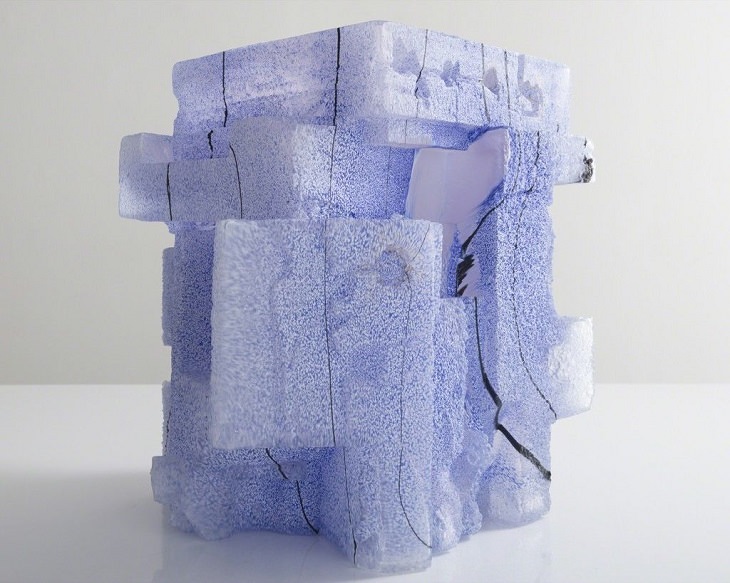
Wolfe is becoming well known, both in and outside of the design world, for his improvisational glass lamps, sculptures, and vessels, which seem to tessellate like crystal formations growing in underground caves. He uses plaster-silica molds to create his colorful art, having found that shaping the glass freehand in a hot shop didn’t give him the control he wanted. The molds are destroyed during the cold work (cutting and polishing) stage of the process, so that each object comes out unique.
Rather than working with a variety of materials, as so many artists do, Wolfe has devoted himself to the craft of glass. He says “I am faithful to it because its material properties provide me with inspiration and challenges. It seems to have endless possibilities, while also having many limitations.”
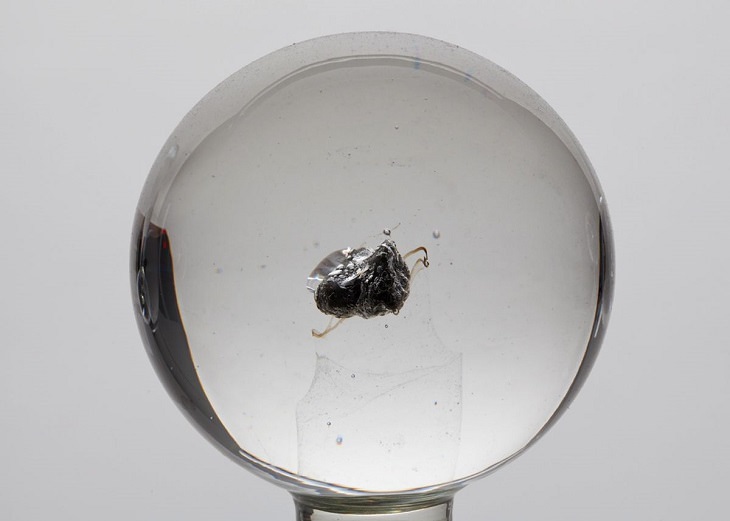
Wilson’s work recalls the old adage, coined by science fiction writer Arthur C. Clarke, that any sufficiently advanced technology is indistinguishable from magic. His projects, which often integrate glass into performances, use the material to explore the connections between science and alchemy.
For his 2009 performance “Trinity Pilgrimage,” Wilson took a trip to the Trinity Nuclear Test site in New Mexico dressed as Dr. J. Robert Oppenheimer (one of the nuclear physicists responsible for creating the atomic bomb). Wilson’s travels entailed collecting trinitite, a rare and radioactive form of glass that was the product of the 1945 nuclear weapons testing.
His resulting “Trinitite Reliquary” series (2010-present), present small pieces of trinitite suspended in glass orbs and gives us an unpleasant reminder of our nuclear history. Wilson sees glass as having the ability to connect the past to the future. He says that “glassworking as a tradition has remained relatively unchanged for centuries, if not millennia. With sufficient care in its construction and cooling, human-made glass can exist in geologic time.

The visual pleasures of glass often arise from a complete paradox: How can an object appear so fluid, yet be so rigid? Just like Gian Lorenzo Bernini’s marble flesh, it miraculously embodies its opposite. It’s tender until touched. Audi’s spectacular glasswork seems especially liquid.
Her “Fluid Rocks” is a series of blobs made from blown glass, pigment, and precious metals that look like they would wobble if poked. In her video work “Landscapes of Mass Replication,” a collaboration with artist Samantha Lee, Audi’s blobs come alive, pulsing and undulating.
Beyond the medium of video, this French-Lebanese artist is also exploring 3D modeling and rapid prototyping. Audi says that “what intrigues me is how to combine new technologies with ancient and traditional hand-making techniques. The tools we have today are so powerful in shaping our reality, and I think about their potential to create new forms and attribute new behaviors to future landscapes. How can these tools inform new contemporary aesthetics?”

Viviano’s latest body of work, which explores the relationship between manufacturing and population change, is inspired by his Michigan roots. Growing up in Detroit in the ‘70s and ‘80s, he experienced firsthand how the loss of auto manufacturing destroyed the area. Viviano’s “Mining Industries” is a series of cast glass blocks topped with 3D-printed models of cities such as Detroit, Houston, and Seattle, produced using LiDARar data (the laser surveying technology used to create high-resolution maps).
Although driven by research and data sets, the work’s intricacy and wealth of detail are enticing rather than intimidating. And while the artist uses industrial materials like ceramic, steel, and glass, the cumulative effect is one of delicacy. He says, “the fragility of glass serves as a metaphor for balance between time, efficiency, and the inability of manufacturing to meet future needs.”
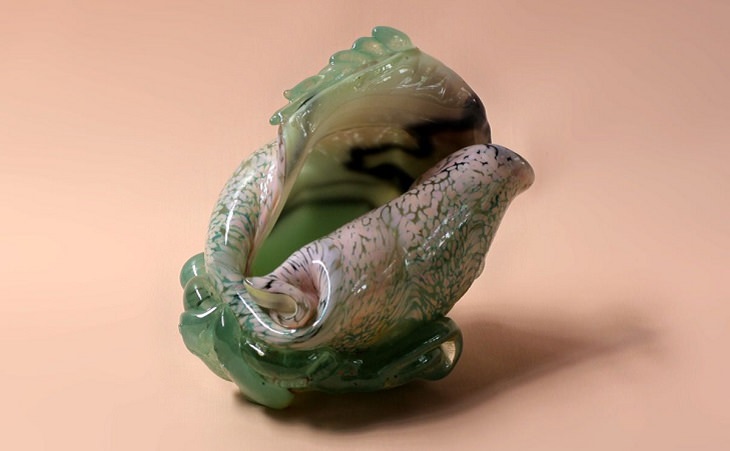
Jungnelius lists Louise Bourgeois, Walter De Maria, Pierre Huyghe, the feminist movement, and traditional Venetian glass techniques among her diverse influences. The Swedish artist’s work is similarly capacious, ranging from small totems of femininity – perfume bottles and tubes of lipstick – to large-scale installations and public artworks.
One current project is the design for the ceiling of a new subway station in Stockholm, which mimics the crenulated surface and pink glow of a seashell but on a monumental scale. She says, “the gloss of the material seduces the observers.” She uses the visual appeal of glass to engage the viewer with a broader set of issues including feminism, ecological sustainability, and economics.
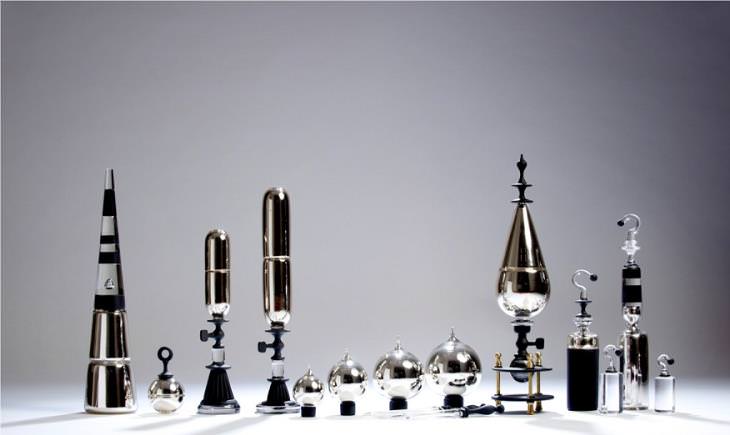
There’s something steampunk about Paiko’s work, which is flamboyant, yet functional. His objects suggest a world in which glass plays a more utilitarian, even technological role. Among these are his “indefinite Sun #6 (2015), a collection of lacquered objects resembling laboratory equipment from a more elegant civilization, including bell jars topped with glass shells and coral.
He also uses glass to create unlikely kinetic sculptures – a glass spinning wheel transforms wool into yarn, a glass metronome keeps time, and a glass seismograph faithfully measures the earth’s vibration. Although his main concern is function, the artist doesn’t shy away from ornament. His work is often stunningly beautiful, earning it a lot of popularity among collectors.
Source: artsy